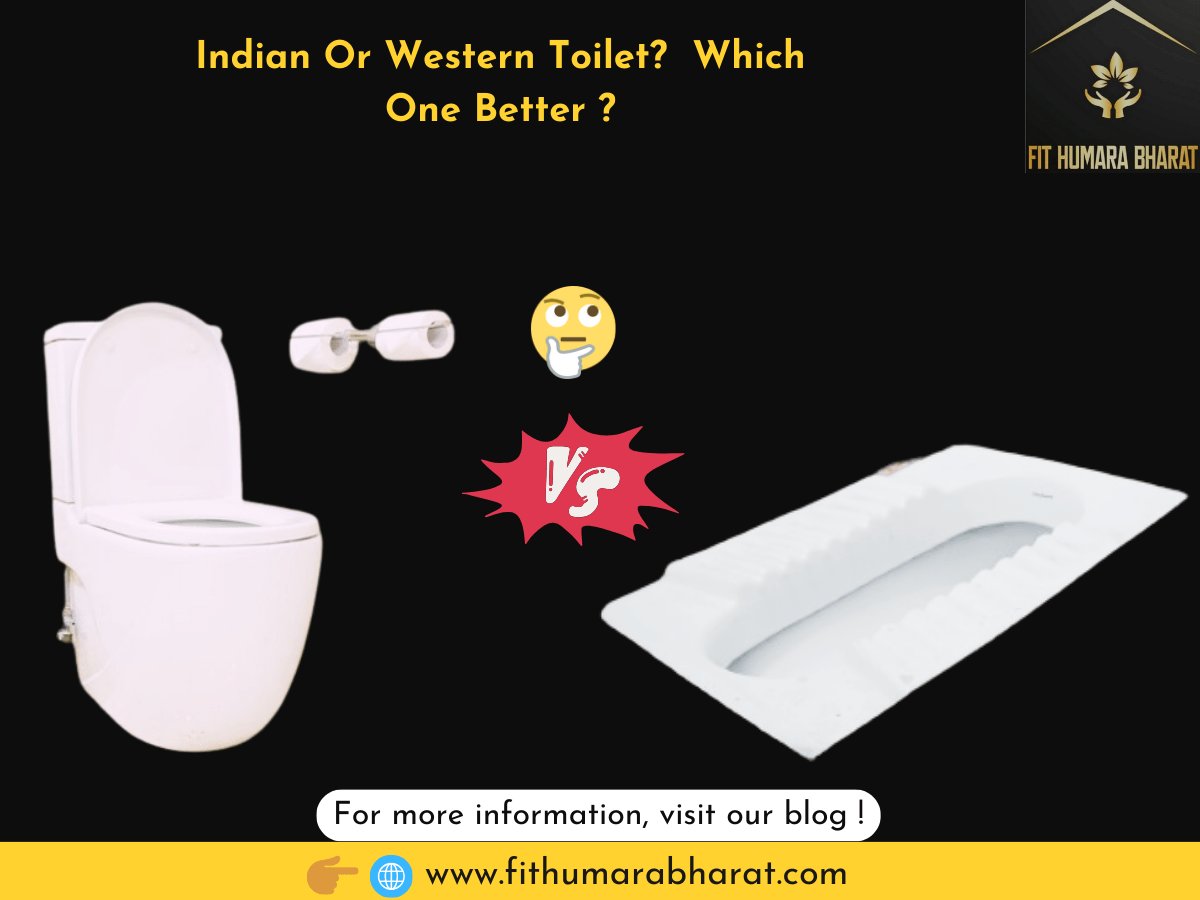In the realm of bathroom fixtures, the debate between Indian toilets and Western toilets has been a longstanding one. Each type brings its own set of features and cultural nuances, choosing between them a matter of personal preference.
In this comprehensive exploration, we delve into the intricacies of Indian toilets, shedding light on their unique advantages that go beyond cultural differences.
Understanding the Distinctive Features of Indian Toilets
Design and Structure: Indian toilets, characterized by their ground-level design, stand in stark contrast to the elevated structure of Western toilets. The former typically consists of a squatting pan embedded in the floor. Allowing users to assume a squatting position comfortably during use. This design is deeply rooted in cultural practices that span centuries. It has been a prevalent choice in Indian households for generations.
The Importance of Ground-Level Design: The ground-level design of Indian toilets goes beyond mere aesthetics. It carries profound cultural and practical significance. Rooted in the historical and sociocultural fabric of India, the practice of squatting is embraced as a natural and health-promoting posture.
Cultural Symbolism in Toilet Design: The squatting design of Indian toilets is a symbolic representation of the importance of grounding oneself, both physically and metaphorically. This connection to cultural symbolism is an essential aspect often overlooked in the discourse on toilet preferences.

Hygienic Considerations
One of the distinctive features that sets Indian toilets apart is the emphasis on hygiene. The absence of direct contact with the toilet seat minimizes the risk of bacterial transfer, promoting a cleaner and more sanitary experience. This design not only aligns with traditional practices but also addresses concerns related to the spread of germs.
The Science of Hygiene in Indian Toilets: To truly understand the hygienic considerations of Indian toilets, it’s imperative to delve into the scientific aspects that support this design. Research indicates that the squatting position adopted in Indian toilets facilitates smoother bowel movements and minimizes the risk of contamination.
Public Health Implications: As we navigate a world increasingly conscious of public health, the hygienic advantages of Indian toilets become even more relevant. Exploring the public health implications of toilet design sheds light on the broader societal benefits associated with embracing this traditional fixture.
Benefits of Opting for an Indian Toilet
In the realm of bathroom fixtures, one cannot overlook the distinctive advantages of opting for an Indian toilet. Renowned for their unique design and functionality, these toilets offer a host of benefits that cater to both comfort and hygiene. As we delve into the intricacies of Indian toilets, it becomes evident why they stand out as a superior choice. Let’s explore the manifold advantages that set them apart from conventional alternatives.
Health and Posture
The health benefits associated with using Indian toilets cannot be overstated. The natural squatting position aids in bowel movements, reducing the risk of constipation and related digestive issues. Advocates argue that this posture aligns with the natural anatomy of the human body, promoting a more comfortable and efficient elimination process.
The Anatomical Argument
Delving into the anatomical aspect of the squatting position, we uncover the physiological reasons behind its efficacy. Understanding how the human body responds to different postures during bathroom activities provides a compelling case for the health benefits associated with Indian toilets.
Holistic Well-being
Beyond the physical advantages, proponents of Indian toilets advocate for a holistic approach to well-being. The interconnectedness of physical health and mental well-being is explored in the context of toilet preferences, emphasizing the broader implications for individuals who prioritize a comprehensive approach to health.
Cultural Connection
Beyond the functional aspects, Indian toilets also offer a cultural connection that resonates with many users. For those who appreciate traditional practices and cultural heritage, opting for an Indian toilet can be a way to maintain a link with their roots. It’s not just a fixture; it’s a reflection of cultural identity.
Preserving Cultural Identity
Exploring the emotional and psychological dimensions of toilet choice reveals the significance of preserving cultural identity. The adoption of Indian toilets becomes a deliberate act of cultural preservation, connecting individuals to their heritage in the most unexpected yet intimate aspects of daily life.
Rituals and Traditions
Unraveling the role of Indian toilets in rituals and traditions provides a deeper understanding of their cultural significance. From religious practices to familial traditions, the toilet becomes a space where culture is not only preserved but actively celebrated.
Latest Stats and Trends
As of the latest data available, a growing number of individuals are recognizing the benefits of Indian toilets. “The design of a Western toilet seat goes against the natural alignment of the human anatomy. It doesn’t facilitate a natural posture for a bowel movement. When seated on a Western toilet, the 90-degree angle creates a constriction that can pinch and obstruct the intestines.”
Analyzing Shifting Trends
Examining the statistical landscape offers insights into the dynamics of changing preferences. Understanding why individuals are increasingly drawn to Indian toilets in the contemporary context involves dissecting socioeconomic, cultural, and health-related factors that contribute to this paradigm shift.
Global Adoption Rates
Beyond regional preferences, exploring the global adoption rates of Indian toilets sheds light on their acceptance outside traditional cultural contexts. Analyzing how these toilets are making inroads into diverse global markets provides a nuanced perspective on the universality of their appeal.
Conclusion
In the ongoing debate between Indian toilets and Western toilets, it’s essential to recognize that both options have their merits. While the Western toilet may dominate global urban landscapes, the Indian toilet offers unique benefits that cater to health-conscious individuals with strong gut and thoroughly cleaned intestine.
Todays generation may not be able to sit and be comfortable on Indian toilet, but as parents and generation-makers, we must adhere to those practice which is healthy rather which is luxurious (at least not at the cost of our health).
Looking ahead, the future of toilet design is a dynamic convergence of tradition and modernity. Analyzing emerging trends in bathroom fixtures provides a glimpse into the innovative approaches that bridge cultural heritage with contemporary lifestyles.
Thank You🙏
- Western toilets, Indian society and public health
- Unveiling the spatial divide in open defecation practices across India: an application of spatial regression and Fairlie decomposition model
- Child health and unhealthy sanitary practices in India: Evidence from Recent Round of National Family Health Survey-IV☆
- Transition in availability of improved sanitation facilities and its effect on diarrhoeal disease in India: evidence from longitudinal data

